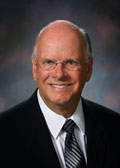
Next Friday, June 26, I will travel to El Salvador to prepare for a group of about 65 people who will be setting up mission projects for their local congregations and conferences. In addition to local pastors and lay church leaders, the group will include several local conference presidents, plus the officers of the North American Division and the Inter-American Division. I am using vacation time to serve as one of two photographers for the group, but I am hoping to find time to update this blog daily. With this post I have included photos from literacy schools in El Salvador from a similar trip I took in 2004.
 I don’t know who all my travel companions will be, but I am aware of at least eight people from the Pacific Union Conference; members and pastors from The Place, Moorpark, Camarillo and Santa Clarita congregations.
I don’t know who all my travel companions will be, but I am aware of at least eight people from the Pacific Union Conference; members and pastors from The Place, Moorpark, Camarillo and Santa Clarita congregations.Hope For Humanity, a service of the NAD, acts as sort of a matchmaker, establishing relationships between local congregations in the NAD and already effective ministries in other parts of the world. To learn more about Hope, go to www.hope4.com. If you click on the Learning Circles video you will see that the work in El Salvador focuses on about 150 literacy schools. I’ll write more about that after I get there.
It is sometimes said that Hope For Humanity is a new name for Ingathering. But the real change is far deeper.
 Ingathering (formerly known as Harvest Ingathering) was invented in 1904 by Jasper Wayne, a traveling salesman from Sac City, Iowa. Wayne discovered that neighbors and strangers would give money to support foreign mission work if given the opportunity. Ingathering was a lay movement – like an ASI project today. But in 1908 the General Conference recommended “the ingathering plan” to all churches. The Encyclopedia lists these five goals.
Ingathering (formerly known as Harvest Ingathering) was invented in 1904 by Jasper Wayne, a traveling salesman from Sac City, Iowa. Wayne discovered that neighbors and strangers would give money to support foreign mission work if given the opportunity. Ingathering was a lay movement – like an ASI project today. But in 1908 the General Conference recommended “the ingathering plan” to all churches. The Encyclopedia lists these five goals.• 100% membership participation.
• Total coverage of the territory
• Searching for persons interested in the gospel
• Increased offerings, and
• A thorough follow-up of interests.
By the late 1960s, when I entered the ministry in the Washington, lip service was given to finding interested persons and a thorough follow-up, but ever-increasing goals, visiting every home in the area of the city or county where the church was located, and enlisting 100 percent of the members in going door to door asking for money had become a primary measure for the effectiveness of pastors – and often a condition of employment. When I arrived in the Texas Conference in the early 1970s, I found that pastors received an extra month’s salary if they raised the goal assigned to their church by the end of December, and they were not allowed any vacation time until the goal was raised. Some pastors were still begging their members in June and July to finish raising their goal. The pastors themselves were expected to approach all the businesses in their territory and ask for business donations. Some pastors and some congregations ingathered 12 months of every year.
Obviously the joy had gone out of supporting mission work, at least for the pastors. In most parts of the NAD, Ingathering vanished during the 1980s when younger presidents – who had hated Ingathering when they were pastors – declined to impose goals on other pastors.
But throughout the world, Adventists with few resources were giving all they had to minister to their neighbors through such things as health ministry, orphanages and literacy schools. They were doing it as a church ministry and they were winning many new Christians and members of the church family – and they needed help. From the ashes of Ingathering rose the fresh flower of voluntary mission projects for local congregations. Its name is Hope For Humanity.
Watch this blog for details on how this trip will strengthen participating congregations in the NAD and minister to the real needs of people in very poor countries.

No comments:
Post a Comment